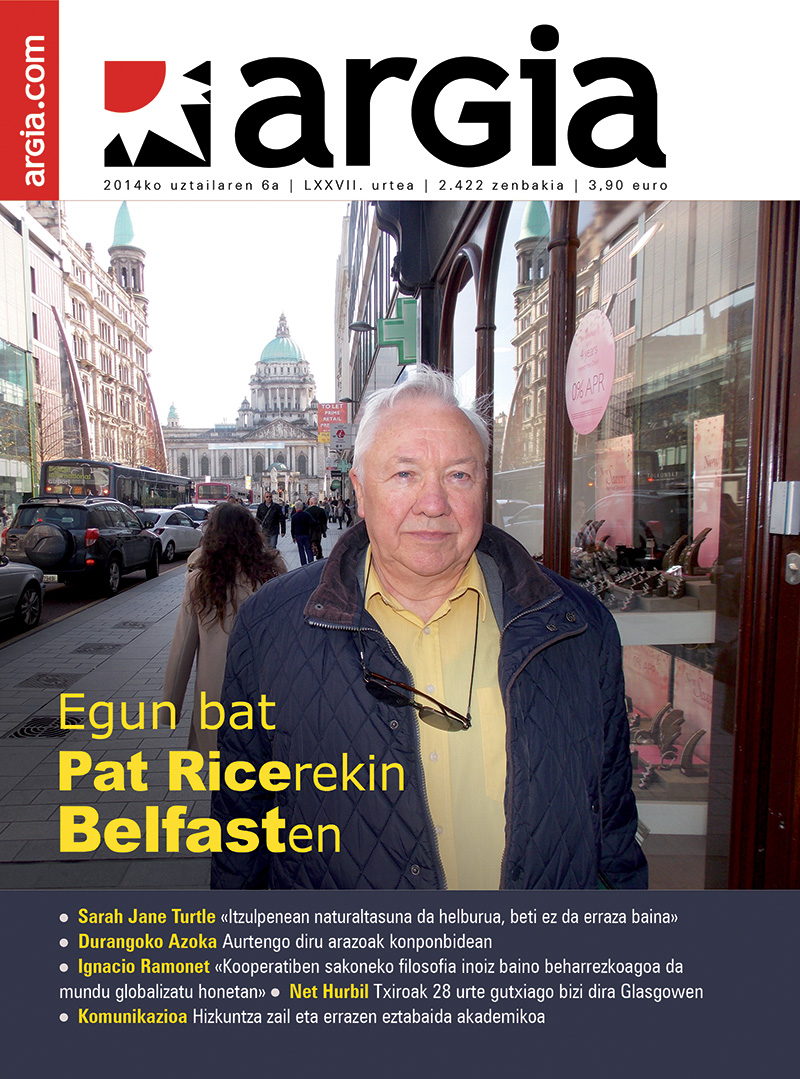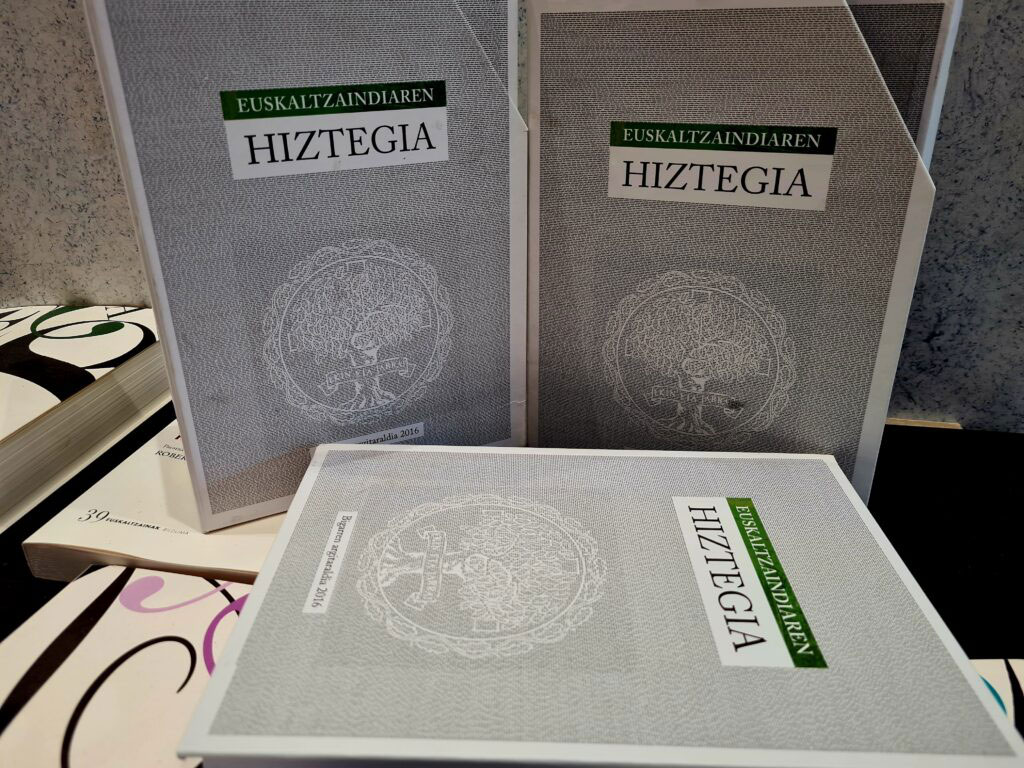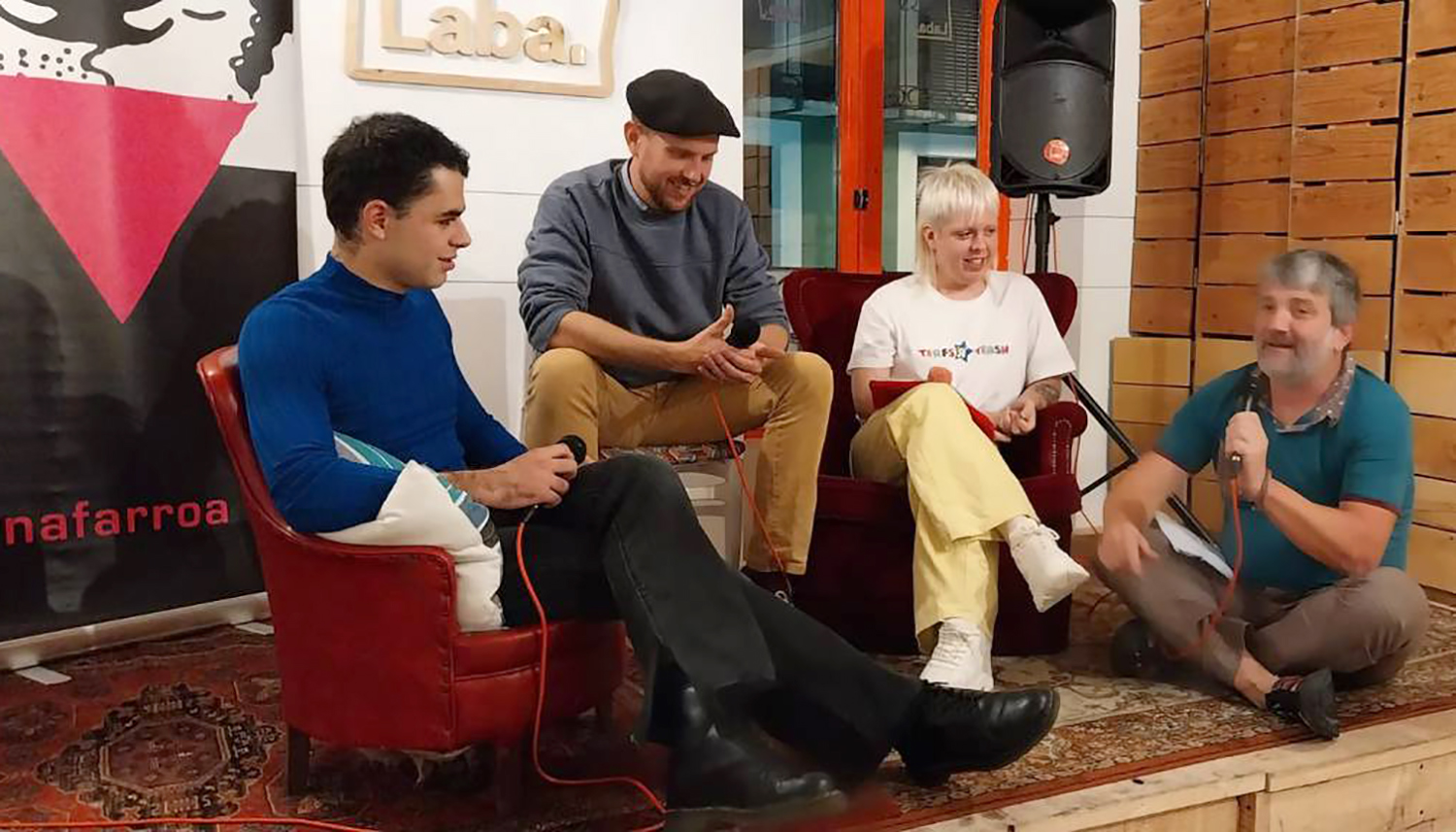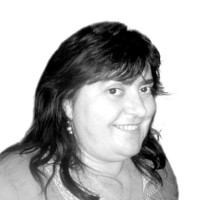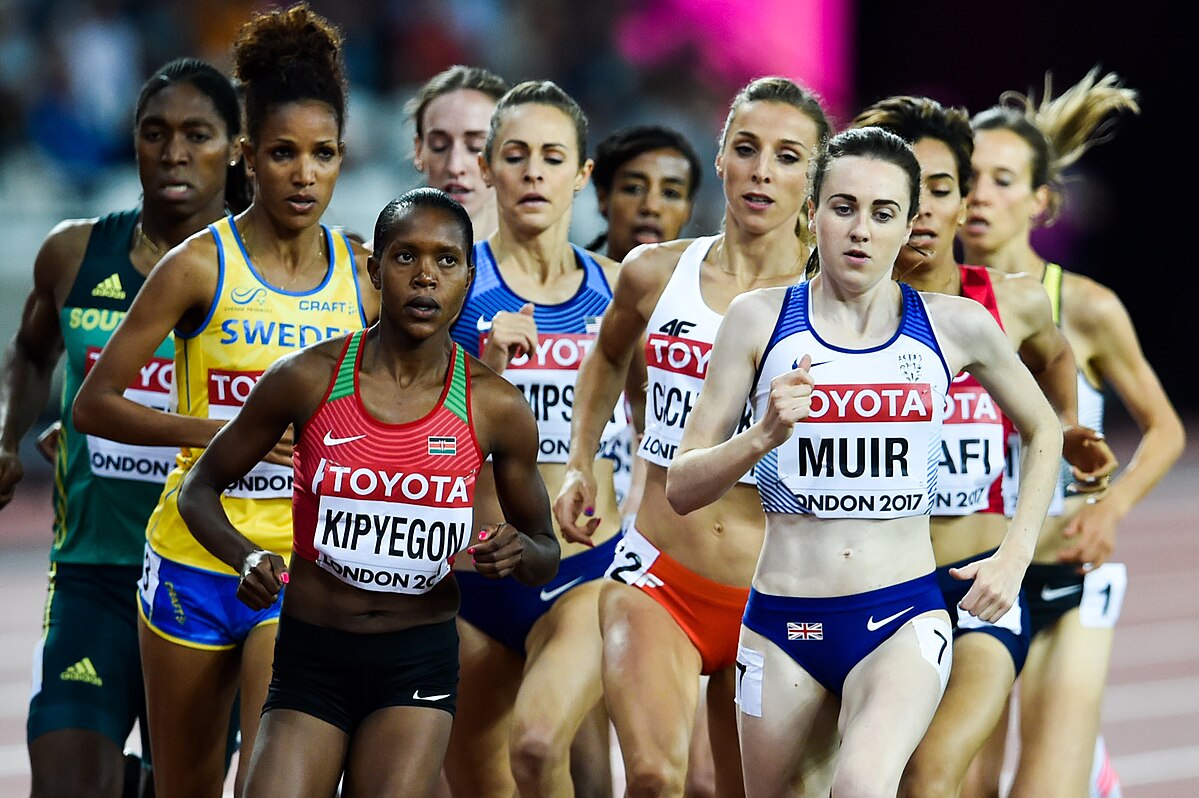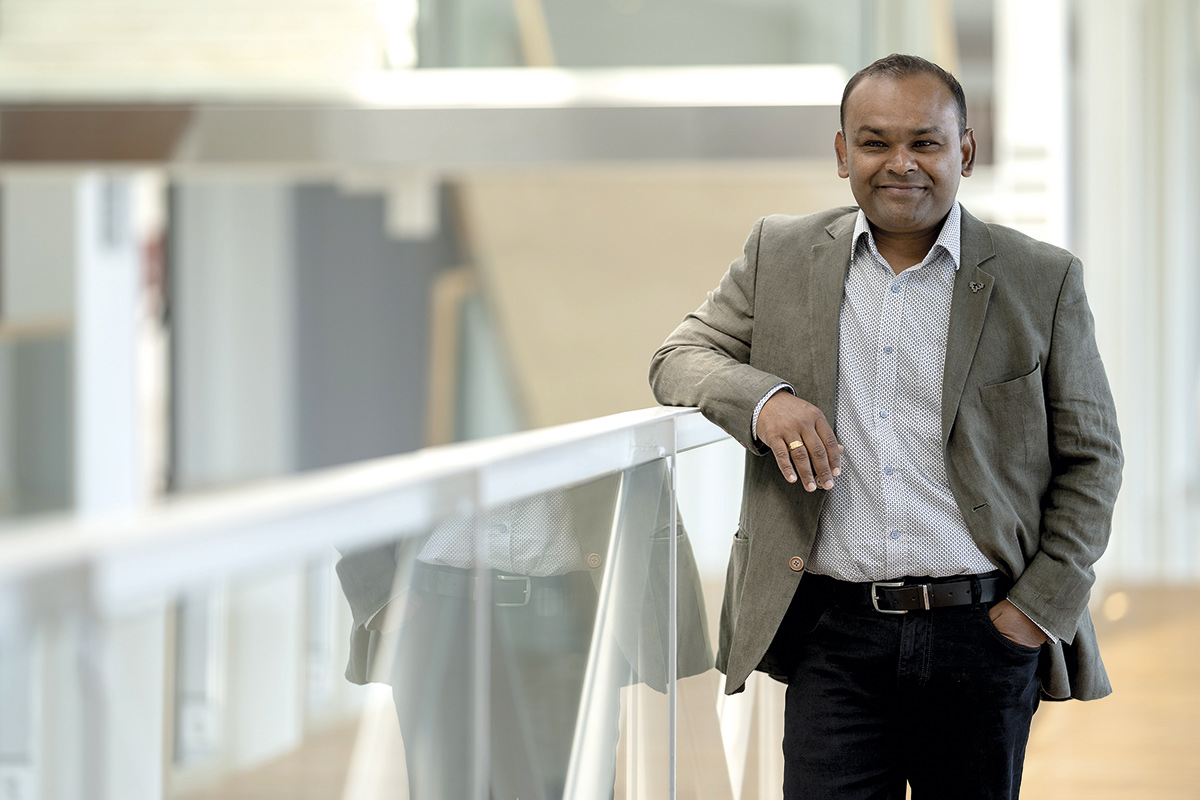Do all languages communicate equally?
- Mikel Mendizabal Ituarte has the precious gift of asking questions. To begin with, he asks: “Why is there so little talk in Basque? Why do so many Euskaldunes never speak in Basque? Why do we use Spanish so often when we speak in Basque?”... In search of answers, the author has created a book with the question on the front page: Communicative equality of languages: Myth or reality? (Utriusque Vasconiae, 2014). Four experts have answered the question.

In the preamble to his work, Mikel Mendizabal Ituarte (Donostia-San Sebastián, 1963) states that, as a professor of languages and Euskaltzale, several questions have been asked about the nature and functioning of languages. In addition, he says that we have read several theories to analyze the diglosic situation of the Basque Country, perhaps with the intention of understanding and reversing the situation. The communicative equality of languages is a project to complete the studies of Psychopedagogy of the Languages of Mondragon Unibertsitatea: Myth or reality? In this sense, Mendizabal wanted to add innovation to the visions that have been carried out so far, and for this it has been implemented with a series of basic questions: “Do all languages have the same communication capacity? Is the communicative parity, the reality or the myth of the languages that are mentioned implicitly or explicitly? Is it easier to speak in multiple languages? And if this is so, why?”
He looked at four linguists and asked them a number of questions. Linguists are: See Azkarate Villar, PhD and Professor of Basque Philology, and member of the Euskaltzaindia number; Bernard H. Bichakjian, former French professor at the Dutch University of Radbour; Juan Carlos Moreno Cabrera, PhD in Philosophy and Literature and Professor of Linguistics at the Autonomous University of Madrid; and Jesús Rubio Peña, PhD in Economic and Business Sciences at the University of the Basque Country.
Mendizabal asks them a series of questions for each to answer for himself: “How would you define language? Is there a more difficult language, both in speaking and writing? What is the ideal language? Are there elements in a language that hinder or hinder communication?... Of course, the question you ask your work is, of course, the following: “Do all languages have the same degree of communicative competence?”
The same potential
In the answer to the question, Professor Miren Azkarate went to look at some of the opinions she had on languages. In the 18th century Larramendi reminds of the works of the Trilingual Dictionary and the foreword of the grammar The Impossible Defeated. According to Azkarate, Larramendi, Joanes Etxeberri de Sara, and the rest, were a consequence of the time and believed that the Basque language was one of the languages that emerged after the confusion of Babel. Proof of this is that the Basque language is not related to other languages. To the point of answering a question from Mendizabal, Azkarate has appealed to what Patxi Baztarrika wrote in his book Babeli Gorazarre. “… what limits the measure of communicative competence and the development of languages is not the same, but the use and functionality that speakers have given to language over the years. Using the image of the language that Lizardi claimed for the Basque language, the more the language is touched, the richer and the more resources the language has, whatever it may be. At the starting point, therefore, all languages are of the same potential”. It will have to be thought that all languages, even if only in power, have the same communicative equality.
Question not answered
Bernard H. In Bichakjian’s view, the question is difficult. “As speakers of all languages disseminate their messages, we should say that all languages have the same communicative capacity,” he points out at the beginning of the answer. But touching the depth, he will tell us: “Since all speakers broadcast their messages, saying that all languages have the same communication capacity that is to say that they all have the same communication capacity, as they have the capacity to conceptualize what they conceptualize. Of course, this is a sequitor.” I mean, a fallacy, or even a lie.
For Bichakjian, the question is whether languages give speakers the same ability to conceptualize. And this linguist has no answer. “For example, adjective languages give the speakers more ability to conceptualize than those who do not have adjectives?” or, in relation to syntax, “languages with complex sentences help more to organize the hierarchical structure of incoming and outgoing messages than those who do not yet construct such sentences?” However, languages that have no adjectives, and that do not use complex sentences, have other resources, “But are those alternatives as effective as the ones before? These and other questions are legitimate and deserve an answer.”
In the end, Bichakjian is drawn to the words of American linguist Charles Ferguson: “In language courses, it has often been considered a scientific truth that all languages are exactly the same, both in complexity and expressiveness, but there is no evidence of this”. Bichakjian adds that the need to be politically correct still weighs heavily, so it maintains the belief that all languages have the same communication capacity. This makes it impossible at all to undertake research, that is, to frustrate attempts to investigate the subject scientifically. Consequently, one question that all languages have the same ability to communicate must be left unanswered.
Communicative competence, speakers
Juan Carlos Moreno Cabrera will dare to touch the nail on the head from the beginning: “Communicative competence is not the ownership of languages, but that of speakers. Languages are not autonomous entities capable of doing so. They're not objects like a corkscrew or a sharpener. Language is the set of specific and specific communicative activities, either verbally or gesturally. Languages are not a means of linguistic communication, but a specific linguistic activity of a community of speakers.” Moreno Cabrera considers that linguistic activity is observable and verifiable, while linguistic competence is verifiable, although not directly observable. Languages, on the contrary, are not autonomous, isolable and verifiable entities or things. “Languages are, as you usually understand, idealized creations of different cultures, such as democracy, spirituality, society, culture, etc.” To ask about the communicative equality of languages, that is, if one language of these has or does not have more communicative capacity than another, would be a nonsense to Moreno Cabrera.
This linguist does not deny that different languages formally use different elements. Another thing is whether this influences in any way the communicative competence of language speakers. Moreno Cabrera will use the example. “There are languages that have a grammatical genre and others that do not. Here's Castilian and Euskera. When speaking of Spanish, we must formally care for the gender of all the nouns we use, unlike when speaking of Euskera. Does this mean that native speakers are more communicatively limited than native Spanish speakers?” Question asked by Moreno Cabrera, who answers: “I think it’s clear that there are no communicative borders like those that exist. Euskaldunes have the same communicative capacity as Castellanoparlantes to communicate the variations on sex; no one seems to have found a disability in it”. For example, but it has also narrowed the issue by saying that neither the Suomnio, nor the Hungarian, nor the Turkish have the grammatical genre, nor in the speakers of those languages have they been seen as having less communicative capacity when it comes to gender or sex.
Communicative competence developed by certain languages
Before the answer to the question asked by Jesús Rubio, it has to be said that this professor of statistics of the University of the Basque Country has built the linguistic system in his own way, or that, among other things, he has followed the path of the prepositive options proposed in his book Euskararen garabideak (Alberdania, 2002). As for the question in the book, Rubio has replied verbatim: “The point is that all languages can express any message in one way or another, but it must be said immediately because there is no end to the issue, because there are languages that have a validism and a differentiated syntactic structure with which opinion has a complex communicative objective. In this sense, there is a more refined, richer communicative competition…”. If the media communicated to us, we would be very grateful if the language were to be wearer. For the debate on the model proposed by Jesús Rubio, however, we only have to go to sustatu.com and read the exchange of views held by Joxe Aranzabal, Pruden Garzia, Josu LAVIN and Jesús Rubio himself when he published the book.
Views by parties
As summarized by the author himself, Mikel Mendizabal Ituarte, Miren Azkarate and Juan Carlos Moreno Cabrera believe that speakers can communicate in all the languages of the world “for example, in modern English or in an Australian aboriginal language, and that if not, it is not precisely because one language is more or less complete than another, but for other historical, political reasons. As for the other two linguists, Bernard H. Bichakjiani and Jesus Rubio, that is, they think it's easier to speak in multiple languages. Once languages of different structure have been studied, it is observed, for example, the existence of a syntactic development that should be taken into account when proposing recommendations and linguistic options. “Some languages – or some characteristics of a particular language – can be more communicative than others, and the bilingual speaker will always – regardless of the affective aspects – have to choose one of the two languages: one that is easier to communicate,” as the author himself summarizes the words of both linguists.
We are seeing more and more spelling errors in the writings of social networks, not only of young people, but also of the media. Some have become so common that they hardly hurt their eyes.
In this way, we can read in Spanish many things like: "You lose a dog," "It'll be that or k... [+]
Euskaltzaindia's motto is "ekin eta jarrai" ("ekin eta jarrai"), the outlawing of Euskaltzaindia. I don't know why the Academy wasn't outlawed, all three words appeared on its logo. The allegations have been made with less - and (those of one age remember the cassette of The Mondragon... [+]
Euskararen biziberritzea Ipar Euskal Herrian jardunaldia antolatzen du ostiral honetan Baionan Euskaltzaindiak. Euskararen alde egiten dena eta ez dena eztabaidatzeko mementoa izango da. Eragileak eta politikariak bilduko dira egun osoan.
In a one-hour commute to the workplace, I am accompanied by the car radio. On yesterday's journey, I had the opportunity to enjoy a short story program, as the last port of the road, full of curves, began in Karrantza. Short legends, yes, of few words, but stories of great... [+]







